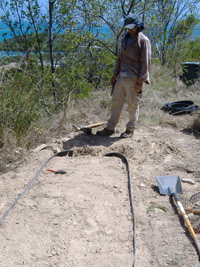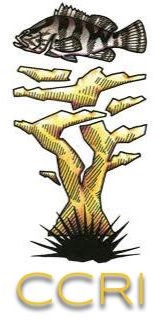Author: Carlos E. Ramos-Scharrón, Ph.D.
Institution: University of Texas, Austin
Year: 2006

Many coral reef systems within the U.S. Caribbean are at risk from land-based sources of sediment and this has prompted the U.S. Coral Reef Task Force to encourage local governments to develop erosion control strategies to mitigate the impacts. The lack of quantitative information and proper watershed assessment protocols is sometimes cited as a cause for inadequate land use decisions. This study builds upon previous research conducted by the principal investigator on sediment production and sediment yield processes on St. John (USVI) and La Parguera (PR). This previous research suggests that land development may increase hillslope-scale sediment production rates by up to four-orders of magnitude (0.5 – 580 Mg ha -1 yr -1 ) relative to undisturbed conditions (0.01 – 0.2 Mg ha -1 yr -1 ), and that at the watershed-scale sediment yield rates into the marine environment may currently be up to nine times higher (8 – 46 Mg km-2 yr -1 ) than what would be expected from undisturbed watersheds (2 – 7 Mg km-2 yr -1 ).
The research being funded by the Caribbean Coral Reef Institute is set to increase the volume of empirical sediment production data and to improve the ability to model the effects of land development on surface erosion and sediment loading rates into coastal waters. The study has the following three main objectives: (1) measure runoff and surface erosion at the plot scale from natural and disturbed hillslope surfaces; (2) develop a comprehensive surface erosion model that integrates data collected in La Parguera with previous data collected in St. John; and (3) develop, improve, and apply two software applications that estimate hillslope sediment production and watershed-scale sediment yields.
Runoff and surface erosion measurements are being collected from six undisturbed and fourteen disturbed plot surfaces (~3 m2 ) with Gerlach troughs since July 2006. A multiple regression approach will be used to develop an empirical surface erosion model based on a series of independent factors including rainfall, surface slope, soil texture, and vegetation cover density. Data and model estimates will be compared to estimates derived from commonly available models such as RUSLE and WEPP, and to published data from Puerto Rico and other tropical settings. The new empirical functions will be integrated into a Windows-based software application that will estimate sediment production.
This software application will help land managers to assess the localized impacts of construction sites on erosion and will use qualitative descriptions, photographs, and other visual aides to guide users through a series of steps needed to adequately characterize eroding surfaces. The proposed study will also integrate the empirical sediment production functions into a new, user-friendly, GIS-based sediment budget system. The model results will allow users to evaluate the contribution of various sediment sources or land use activities on watershed-scale sediment yields. The sediment budget system will also produce maps that will describe the spatial variability of sediment production and will aid users in evaluating the net contribution of individual sediment sources (e.g., construction sites, road segments, etc.) to sediment yields. Application of this model based on historic and current land use maps will allow us to reconstruct the sediment yield patterns into the La Parguera marine environment from the 1930’s until the present. This GIS application is intended to allow land managers to evaluate surface erosion problems at the watershed-scale and to standardize the development of erosion control strategies throughout the Caribbean.
References & more
- Project description
- Project presentation
- Ramos-Scharron C.E. (2010) Sediment production from unpaved roads in a sub-tropical dry setting – Southwestern Puerto Rico. CATENA 82(3): 146-158. https://doi.org/10.1016/j.catena.2010.06.001
- Ramos-Scharron C.E. (2018) Land disturbance effects of roads in runoff and sediment production on dry-tropical settings. Geoderma 310: 107-119. https://doi.org/10.1016/j.geoderma.2017.08.035
